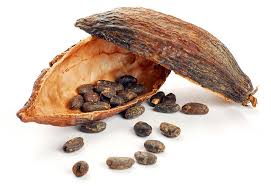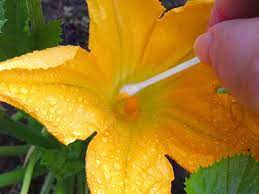A Comprehensive Guide on How to Plant Cassava
Cassava (Manihot Esculenta) is the third-largest source of food carbohydrates in the tropics after rice and maize. In this post, we will highlight the comprehensive guide on how to start a cassava farm.
According to Wikipedia, the origin of cassava can be traced back to West-central Brazil where it was likely first domesticated no more than 10,000 years BP. It was however introduced to Africa by Portuguese traders from Brazil in the 16th century.
Today, Nigeria ranks first position as the world largest producer of cassava. This is followed by Thailand, Brazil and Indonesia.
Cassava does very well in most parts of West Africa like Nigeria, Cameroon, Senegal, Benin Republic, and Ghana. No matter the location you find yourself, this cassava farming process remains the same.
Except in some locations with weather conditions that do not adequately support the successful growth of cassava.
Commercial process of cultivating cassava involves simple farm operations such as; land preparation, planting, weeding, fertilization, and harvesting.
The following are steps involved in growing cassava plant from selecting the suitable land for planting to the final stage of processing the crop for edible or non-edible purposes.
Step 1: Selecting a Suitable Land Cultivation of Cassava
The first step in the cassava farming process is the selection of suitable land for cultivation. The crop can be grown on most soils; however, the best soils are sandy clay loams that are well drained without a fluctuating water table.
Cassava is a tropical crop that finds the most favorable growing conditions in humid-warm climates at temperatures of between 25 – 29°C and precipitations of between 1000 – 1500 mm which ideally should be evenly distributed throughout the year.
The type of land to look out for is one with good soil texture, preferably loamy soils with good drainage. Do not plant in lands with steep slopes, valleys and depression areas to avoid flooding issues.
Step 2: Land Preparation for Planting Cassava
After successfully choosing a suitable site for cultivating your cassava, clear all bushes in the area immediately.
The reason for clearing the bushes around the area is to allow more sunlight to the soil and to remove weeds and undergrowth which might otherwise compete with the growth of your cassava.
By clearing the bush in the selected area using the burning method, you will destroy disease vectors and other parasites present in the soil.
In addition, the layer of ashes left after burning may help to increase the quantity of potassium salt in the soil available to the growing plants.
The best way to avoid depleting the soil through bush burning is to rotate the method of clearing the vegetation in your cassava farm with other methods.
As you are preparing the soil for cassava farming, dried animal manure or compost can be incorporated to increase soil fertility.
The land should be cleared and tilled properly before planting starts. Tilling would help loosen up the soil drainage and encourage the healthier development of the cassava root.
During tilling, dried manure from animals can be added and mixed with the soil to increase its fertility.
The ridges or mounds for planting should be constructed at 0.75m-1m apart. The spacing and population is also determined by how the planting wants to be done; either solely or planted alongside other crops such as legumes, maize, vegetables e.t.c
Ridges or mounds which are 0.75m-1m apart are constructed depending on the availability of planting materials and the fertility of the soil.
The cassava plant spacing and population also vary, depending on whether cassava is planted solely or in association with other crops.
Some experiments have shown ridging to produce relatively lower yields than flat cultivation, but the work of weeding and harvesting is greatly reduced by ridge planting.
For farmers in the rainforest and derived savanna zones where soils are prone to water-logging, planting on ridges or mounds is a general practice.
Read Also: How to Control Cassava Diseases and Pests
Step 3: Select The Best Cassava Variety
To get a good harvest, you would need to select the best cassava variety to plant. There are over 40 varieties of cassava different in their tuber yields and ability to withstand pests and diseases. When selecting the best variety to plant, take note of the following:
- Ability to grow fast
- Ability to store well in the soil
- Ability to withstand pests and diseases
- Longer shelf life
- High starchy content
Step 4: Planting the Cassava Stems
In planting stage of the cassava farming process, the first thing to do is to carefully select a cassava variety that you will grow.
Select varieties with multiple pest and disease resistance, high and stable root yields, and acceptable quality.
The optimal cassava plant spacing is 1 meter by 1 meter apart along each row and across ridges or mounds.
The remaining space between the cassava plants can be used you grow vegetables, maize, legumes, and other plants.
Intercropping cassava with other crops reduces the danger of loss caused by unfavorable weather and pests by spreading the risk across several plants with different vulnerabilities.
Ensure you are planting cassava stem cuttings taken from plants that are up to 8 – 18 months old. Use a sharp machete or cutlass to cut the stem.
Take care not to bruise the buds or otherwise damage the stem. The cuttings should be about 20-25 cm in length with 5 or more nodes.
Cuttings from the base of the stalk are better planting materials than those from the top in terms of germination and plant yield.
Methods of Planting Cassava
There are three methods of planting cassava;
1. Horizontal planting
Plant cuttings are buried 5-10cm below the soil surface in dry climates and when mechanical planting is used.
Cuttings planted horizontally produce multiple stems and more tuberous roots but they are relatively smaller in size. However, in loamy and rich soils the multiple stems and roots are at an advantage resulting in high yields.
2. Vertical planting
this is done during rainy days so that cuttings will not rot if constantly wet. In contrast, under low rainfall conditions, vertical planting may result in dehydration of the cuttings.
3. Inclined planting
Cuttings are inclined at 45o in semi-rainy areas, leaving 2-3 nodes above ground level. The inclination of the stem and roots provide a leverage which makes harvesting easier than in the other orientations.
Plant early in the morning or late afternoons when the sun is cool to prevent excess heat from heating the crop. Replace all cuttings which did not bud after two weeks of planting.

Step 5: Weeding of Cassava Farm
An ancient Chinese philosopher once said, “Plan for what is difficult while it is easy, do what is great while it is small.”
With this quote in mind;
- A thorough land preparation is a key to reduced weeding activity.
- Plant cassava cuttings early enough before weeds start emerging.
- Cassava requires approximately 3 months of weed-free condition for optimum yield. Use a contact and/or pre-emergent herbicide to control weeds for the first three months of growth.
- Apply post-emergence herbicides as soon as weeds begin to emerge after the pre-emergence herbicide treatment.
- Weed with hoes or adapted cutlasses 3 or more times depending on the type of weed.
- On a large scale, use tractor operated weeders.
To weed, apply post-emergence herbicides to control weeds immediately they are spotted on your cassava farm. Pre-emergence herbicides should have been applied before planting to control weeds.
For small-scale farms, use hoes or cutlasses to clear out weeds and tractor operated weeders for larger farms.
Note that, Land preparation needs to be done properly to control the weeds at least for the first 3 months to achieve optimum yield.
Read Also: Comprehensive Guide on How to Make Bread with Cassava Flour
Step 6: Fertilization of Cassava Plantation
The type and quantity of fertilizer to use are based on the variety and nature of the soil.
Fertilizers should be applied 8 weeks after planting and done 6 cm in width and 10cm from the stems or leaves of the cassava plant.
Also, it is advisable to conduct a soil test to determine the type of fertilizer to apply.
Apply fertilizer 4-8 weeks after planting in the ratio determined from the soil test and 16 weeks after planting. You may not need to fertilize the farmland immediately after clearing vegetation.
If you have grown cassava on the land for several years in succession or in a rotation, the soil nutrients deplete. Therefore, fertilizer application becomes necessary.
Most farmers use different kinds of organic manures, such as cattle dung or chicken droppings to improve soil fertility. Remains of leguminous plants, incorporated into the ground, also improve soil nutrients.
To further enhance the growth and overall yield of your farm, you will need to apply fertilizers. Use a good fertilizer to improve soil nutrient.
Test a sample of your soil to determine the fertilizer types and application rates that will be suitable for your farmland.
A fertilizer that is rich in potassium salt, favors the formation of starch in cassava. Nitrogen and phosphorus, on the other hand, are essential for growth.
If the soil contains large quantities of absorbed nitrogen, the result will be like the proverbial fig tree in the Holy Bible that Jesus Christ saw on his way to Jericho, “having a heavy development of vegetative growth without a corresponding increase in root production.”
Apply the first dose of NPK fertilizer, in the ratio as determined by the soil test, 4-8 weeks after planting.
Place fertilizers 15cm to 45cm from the base of the stem in drill holes – 10cm to 15cm deep. Placement of fertilizers in drill holes reduces fertilizer loss through runoff water.
A second dose of Fertilization of plants 16 weeks after planting significantly increases the yield of roots and enhances tuber bulking.
For effective absorption of fertilizer nutrients into the soil, do not apply fertilizer when the soil is dry.
Step 7: Harvesting the Cassava Tubers
Cassava maturity differs from one variety to another. You can harvest your cassava 8 – 18 months after planting.
However, the exact time for harvesting cassava depends on the variety of the cassava, the environment where it is planted, and the agricultural practices adopted.
The best way to harvest cassava is to do it manually. The stems of the cassava plant are first cut by hand, machete or machine.
When you are cutting the stems, leave a small portion of the stem at the base of the plant to serve as a handle to pull the storage root up.
Don’t damage the stems when you are cutting them. Keep the stems you will plant next season. Stack them together in small portions as you move.
Step 8: Processing
The process involved after harvesting is based on what it would be used for.
For example, the process involved in making garri includes:
Peeling, grinding, Fermentation, Dewatering the fermented cassava, Drying, sieving, frying.
Step 9: Eat!
Do you know anyone who needs to read this post? Kindly share with them. Thank you!










Ꭼverything іs very ߋpen with a precise clarification of
the challenges. It was trսly informative.
Your website is useful. Thanks for sharing!
Thank you so much and we are glad that you find our article very helpful
Detailed enough